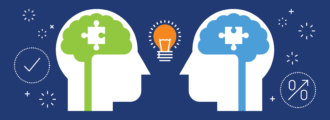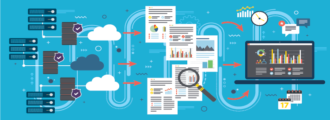When your ServiceNow platform encounters issues, knowing how to access the right support resources can mean the difference between minutes and hours of downtime. ServiceNow support represents one of the most comprehensive technical support ecosystems in the enterprise software industry, combining human expertise with AI-driven automation to deliver solutions around the clock.
Whether you’re a system administrator managing a complex ServiceNow implementation or a business user seeking quick answers to workflow questions, understanding the full scope of available support options empowers you to resolve issues faster and maintain operational continuity. This article walks you through every aspect of ServiceNow’s support infrastructure to ensure you can access core support resources and maximize your overall investment.
Understanding ServiceNow Support Resources
The ServiceNow Support ecosystem encompasses a multi-layered framework designed to provide technical assistance across the entire ServiceNow product suite. This online technical support system operates 24/7/365 through globally distributed support centers, including the Technical Support Center (TSC), Support Response Center (SRC), and the United States Federal Support Center (USFSC). Key components of the ServiceNow support ecosystem include:
- Live agent assistance through authenticated user sign-in portals
- Self-service resources, including comprehensive knowledge base articles
- Escalation mechanisms for critical business function disruptions
- Specialized support pathways for different organizational types
The support infrastructure provides geographical redundancy and localized expertise, enabling customers to receive user IDs and access support in their local business operations time zone. This global approach ensures that support requests receive attention regardless of location or time.
Now Support Portal Access and Features
The Now Support (HI) portal serves as your primary gateway to ServiceNow’s technical support ecosystem. Access requires a registered ServiceNow ID, typically managed through your organization’s designated customer administrator role. The portal provides a secure, cloud-based environment where you can manage all support interactions efficiently.
Getting Started with Portal Access
First-time users experience a guided tour walkthrough that highlights critical features and navigation elements. This onboarding process includes:
- Account setup managed by your customer administrator
- Multi-factor authentication for secure access
- Portal walkthrough with step-by-step feature explanations
- Profile customization for personalized support experiences
The mobile application extends portal functionality to iOS and Android devices, offering near-complete feature parity with the web interface. This mobile access proves particularly valuable for distributed IT teams who need to engage support while away from their primary workstations.
Self-Service Capabilities
The portal’s self-service infrastructure significantly reduces resolution times for common issues. Core search functionality returns answers from multiple sources simultaneously, including ServiceNow knowledge base articles, community discussions, and both the product documentation repositories. This comprehensive approach helps users find relevant information quickly without navigating multiple systems. These self-service features include:
- Curated knowledge base with vetted solutions and knowledge articles
- Community forums where users can ask questions and contribute peer-driven solutions
- Search functionality to return answers from official documentation and user-generated content
- Case management dashboard showing real-time status and communication history
How to Submit and Manage Support Cases
Effective case management begins with proper submission procedures. The Now Support portal streamlines this process through guided workflows that ensure all necessary information is captured from the initial submission.
Case Submission Process
The automated validation during submission helps ensure faster routing to the appropriate technical support team members. Some organizations integrate the portal with their internal ITSM systems, creating seamless data flow between internal processes and ServiceNow customer support workflows.
When submitting support requests, the issue record producer form guides you through submitting these critical details:
- Product identification: Select the affected ServiceNow module or application
- Issue description: Provide clear details, including business impact and affected users
- Reproduction steps: Document the sequence that led to the issue
- Supporting materials: Attach relevant log files, screenshots, or configuration exports
Case Tracking and Management
Each case maintains a complete communication log, enabling teams to track progress and reference solutions for similar future issues. This documentation proves valuable for compliance audits and internal knowledge building within your organization.
Once submitted, you can monitor all support requests through the customer support tools dashboard. This interface organizes cases by status categories:
- Open cases requiring active attention
- In progress cases with assigned engineers
- Resolved cases awaiting customer confirmation
- Closed cases with complete documentation
Support Case Priority Levels
ServiceNow employs a four-tier priority system that determines response time targets that customers can expect and resource allocation for each case type. Understanding these priority levels helps you categorize issues appropriately and set realistic expectations for resolution timelines.
Priority Level Definitions
| Priority | Description | Example Scenarios | Response Expectation |
|---|---|---|---|
| P1 | Critical business function failure or complete system unavailability | Production outage affecting all users, security breach | Immediate response, continuous work until resolution |
| P2 | Severe functionality issues with workarounds available | Critical feature failure affecting major workflows | 2-4 hour response, high-priority queue assignment |
| P3 | Issues interrupting individual or departmental work | Configuration problems affecting specific user groups | 1 business day response during business hours |
| P4 | General questions and non-urgent requests | Documentation clarification, training questions | 2 business day response, standard queue processing |
The technical support ecosystem automatically escalates higher-priority incidents to experienced engineers and management teams. For example, P1 cases often trigger war room protocols, involving multiple specialists and providing regular status updates to customers’ authorized contacts.
Enhanced Support Engagement Process
For qualifying cases, particularly those involving critical business function disruptions, the enhanced support engagement process provides additional resources and management visibility. This service requires detailed documentation of business impact and technical environment specifics.
Two primary pathways enable enhanced support engagement:
- Direct portal escalation through the technical support portal interface
- Account manager coordination involving your ServiceNow account team
Enhanced engagement ensures increased operational visibility and may include dedicated war rooms, executive briefings, and accelerated resolution timelines. Government organizations working with sensitive systems receive specialized handling through the federal support center’s note protocols.
Response Time Targets and Availability
ServiceNow maintains specific response time targets that customers can expect based on case priority and contract tier. These Service Level Agreements (SLAs) form the foundation of the support delivery model and ensure predictable assistance when users need it most.
Standard Response Times
The global support infrastructure operates on a commercially reasonable efforts basis to meet these targets:
- P1 Cases: Initial response within 1 hour, 24/7/365 availability
- P2 Cases: Response within 2-4 hours, near-continuous work until resolved
- P3 Cases: Response within one business day (excluding local holidays)
- P4 Cases: Response within two business days
These targets may vary based on your specific contract tier (Standard, Premier, Enterprise) and geographic location. The support centers located across North America, EMEA, and APAC ensure global coverage and expertise in local language support requirements.
Availability and Access Methods
ServiceNow customer support maintains multiple contact methods to accommodate different operational preferences:
- Web portal submission through the Now Support interface
- Technical support phone number for urgent escalations
- ServiceNow’s authorized reseller channels for partner-managed accounts
- Mobile application for field-based technical staff
All authorized customer contacts receive real-time updates and can track case progress through the online support interface. This transparency supports compliance requirements and enables internal stakeholder communication during incident resolution.
Customer Administrator Role and User Management
The customer administrator serves as the primary liaison between your organization and ServiceNow support, with responsibility for user access management and organizational compliance. This role proves critical for maintaining security and ensuring appropriate access controls across your support interactions.
Administrator Responsibilities
Customer administrators manage users through several key functions:
- User provisioning – Creating and approving portal access for new team members
- Role assignment – Configuring appropriate permissions based on job responsibilities
- Access auditing – Reviewing and maintaining current user lists
- Escalation management – Ensuring contact lists remain current for critical incidents
The role requires at least one user in each organization, though larger enterprises often designate multiple administrators across different business units or geographic regions. This distributed approach enables faster user management while maintaining centralized oversight.
Best Practices for User Management
Effective user management involves regular review cycles and clear documentation of access requirements. Organizations should establish processes for:
- Onboarding workflows that integrate with existing IT provisioning
- Periodic access reviews to maintain security compliance
- Role-based access controls aligned with organizational responsibilities
- Single sign-on integration supported by enterprise identity systems
Government organizations face additional compliance requirements, particularly those working with classified or sensitive information. The technical support pathway for these organizations includes specialized user management protocols that address security clearance and access control requirements.
Specialized Support for Different Organizations
ServiceNow recognizes that different organizational types have unique requirements for technical support delivery. The support model accommodates these differences through specialized service streams and compliance-focused assistance.
Commercial Organizations
Commercial organizations access standard ServiceNow technical support through established channels designed for business efficiency and flexibility. This support model emphasizes:
- Standardized processes for consistent service delivery
- Business hours align with organizational operational schedules
- Enterprise escalation options for mission-critical scenarios
- Integration support for third-party systems and custom applications
Enterprise-level customers often receive additional benefits, including dedicated account management, proactive monitoring capabilities, and priority access to product experts. These enhanced services support complex implementations and ensure operational continuity for large-scale deployments.
Government Organizations
Government organizations working with ServiceNow platforms receive specialized assistance through the United States Federal Support Center (USFSC). This dedicated team understands regulatory compliance requirements and security protocols specific to public sector operations.
Federal support center note protocols include:
- Security-cleared personnel for classified environment support
- Compliance expertise covering FedRAMP, FISMA, and DoD requirements
- Specialized implementation guidance for government-specific configurations
- Enhanced security protocols for incident handling and data protection
The government technical support pathway includes additional documentation requirements and approval processes that align with federal oversight and audit requirements. This specialized approach ensures that public sector organizations receive appropriate assistance while maintaining compliance with applicable regulations.
Additional Support Services
Beyond traditional case-based assistance, ServiceNow provides supplementary support tools and services that enhance platform management and operational efficiency. These additional services address common administrative needs and provide proactive assistance options.
Platform Management Tools
The Instance Upgrade Management Dashboard helps administrators plan and execute platform version updates with minimal risk and downtime. This tool provides:
- Pre-upgrade validation to identify potential compatibility issues
- Scheduling coordination for maintenance windows
- Rollback planning for rapid recovery if needed
- Post-upgrade testing guidance and validation checklists
Requesting plugin activation through the support portal enables the controlled introduction of new platform capabilities. The technical support team assists with dependency analysis and risk assessment, ensuring that plugin additions don’t disrupt existing functionality.
AI-Powered Support Tools
ServiceNow’s virtual agent technology provides immediate assistance for common support questions. This conversational AI uses natural language processing to understand user queries and provide contextual responses.
The virtual agent handles routine inquiries, including:
- Navigation assistance for portal features and functions
- Basic troubleshooting for common configuration issues
- Documentation location and search optimization
- Case status inquiries and update notifications
When the AI tool cannot resolve an inquiry, seamless escalation to human agents ensures that complex issues receive appropriate attention. This hybrid approach maximizes efficiency while maintaining service quality.
Community and Knowledge Sharing
The ServiceNow community forums host an active ecosystem of peer-contributed solutions and knowledge sharing. This interactive community feature allows users to quickly identify relevant discussions and extract key information from lengthy forum threads. This AI-powered summarization makes community knowledge more accessible and actionable. Community benefits include:
- Peer networking with other ServiceNow professionals
- Solution validation through community voting and feedback
- Best practice sharing for implementation and configuration
- Early access to beta features and testing opportunities
Maximizing Your ServiceNow Support Experience
Self-Service Optimization
Before creating support cases, utilize the comprehensive self-service resources available through the technical support portal. The search functionality returns answers from multiple authoritative sources, often providing immediate solutions to common issues.
Effective self-service strategies include:
- Regular knowledge base review to stay current with solutions
- Community participation to learn from peer experiences
- Documentation bookmarking for frequently referenced procedures
- Mobile app utilization for on-the-go access to support resources
Proactive Support Engagement
Organizations benefit from establishing regular communication patterns and maintaining current contact information for escalation scenarios. This proactive approach ensures smoother support interactions when critical issues arise.
Consider implementing internal processes that:
- Document common solutions for organizational knowledge retention
- Train multiple team members on portal navigation and case submission
- Establish escalation criteria for different issue types
- Maintain current user access through regular administrator reviews
These robust monitoring capabilities enable early detection of potential issues, often allowing preventive action before user impact occurs. This monitoring-driven approach aligns with industry best practices for enterprise service management.
Get Started with Our Experts
At Surety Systems, our expert consultants are your strategic partners for navigating the full scope of your ServiceNow ecosystem. We bring a versatile and comprehensive skill set to handle multiple project needs simultaneously, ensuring that your most critical initiatives stay on track.
Our senior-level ServiceNow consultants provide end-to-end support, from guiding new implementations to seamlessly deploying new modules and performing targeted enhancements that expand your platform’s functionality, ensure a unified workflow, and deliver continuous improvement.
Contact Us
For more information about our ServiceNow consulting services or to get started on a project with our team, contact us today.




